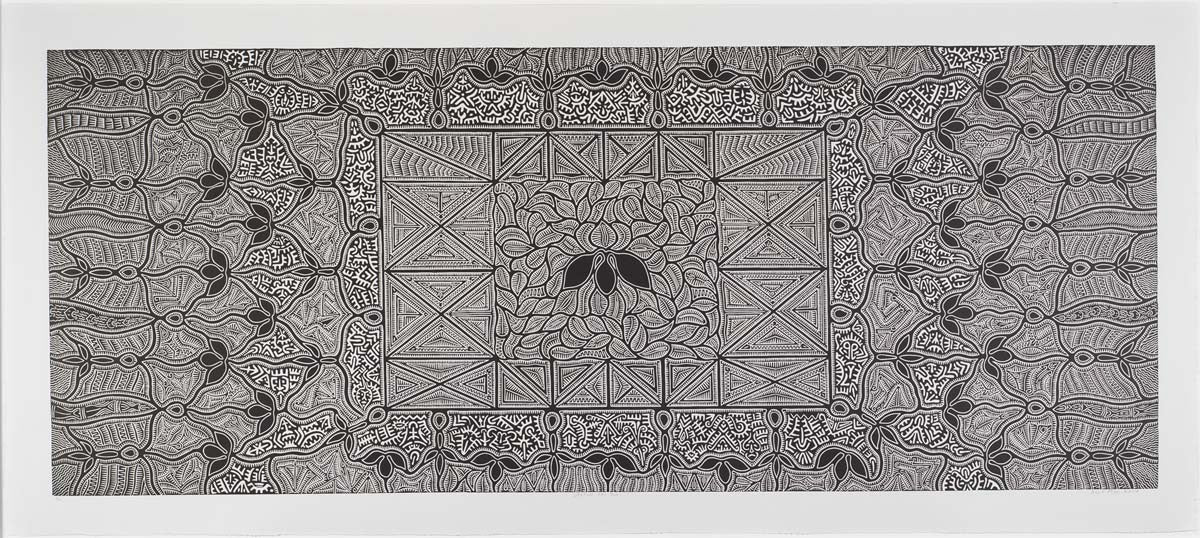Billy MISSI
BILLY MISSI | 'Urapun Kai Buai (one big kin)' | Linocut print
BILLY MISSI | 'Urapun Kai Buai (one big kin)' | Linocut print
Couldn't load pickup availability
Linocut printed in black ink from one block
Edition of 35, 2007
Published by Djumbunji Press KickArts Fine Art Printmaking
Image size: 1000mm x 2500mm
Paper size: 1200mm x 2700mm
Paper type: Hahnemühle 350 GSM
Ink type: Van Son
Printed by Theo Tremblay, Editions Tremblay
Please do not hesitate to contact KickArts Shop staff to receive a larger image of this work via email.
Billy Missi, 1970- 2012, was from Kubin Village, Moa Island in Zenadh-Kes (the Torres Strait). His solo exhibition Urapun Kai Buai (One Big Kin) focuses on family and cultural protocols, and the artist's contemporary life experiences growing up in Zenadh-Kes. Missi is known as one of the leading printmakers of this region, having exhibited widely and achieved both national and international acclaim. He comes from a respected family of art practitioners and choreographers, from the tribes of Wagedagam, Geomu and Panai in Malu Lilgal (Western Torres Strait). His work is based on reasons for survival. He states: "The Torres Strait has a complex history and culture, vegetation and eco systems that work with the phases of the moon, so the livelihood of people in that region is based on, and strongly connected with the natural surroundings, hunting and gathering, identifying foods. Its why our people have continued to pass on traditional stories and cultural traditions".
Story: "Torres Strait Islanders are all related to each other, so my grandparents, uncles and aunties told me when I was young.
From the sharing of food to Garab Thia (traditional visits and staying over, whether in the village or on another neighbouring island), growing up on the islands has made me see and realise that.
Wongai is a native fruit of our region. Therefore it is placed at the centre of this piece. The wavy lines going outwards represent the movements of the people to all four corners of the Straits. This happened mainly through intermarriage.
Identical patterns on either side of the work represent relatives to the East, West, North and South of our region. Tight, strong patterns represent the bonds between extended families. These were maintained through the practicing of culture, through the choreography of songs or dances and through traditional visits.
In this work the seeds of the Wongai represent the beginnings of a family on another island. The leaves or plants represent the family growing there. The bearing of fruit represents a generation of children.
Today the increase in intermarriage has made it far more complicated for modern Torres Strait Islanders to understand their family relationships. The patterns on the far left and right represent the fact that it is very important to our current elders to pass on the knowledge of these movements of people on to the young ones, so they can know and consider them.
In the late 1800s the first genealogy of the Torres Strait was recorded by Rivers as a part of the A. C. Haddon expedition. Later, in 1901, it was released in six volumes and through the journals and tables of family trees you can understand these relationships.
All of this has inspired me to turn the oral history and written journals into a work of visual art and to call it 'Urapun Kai Buai' (One Big Kin)."


